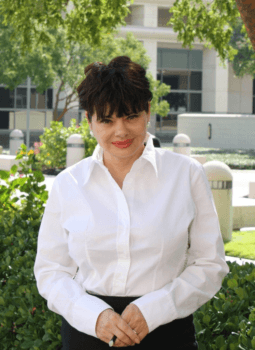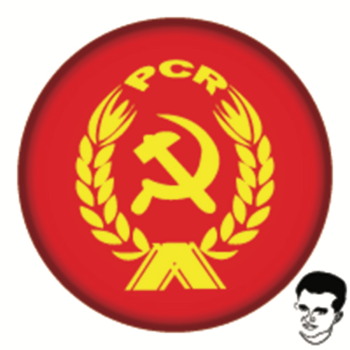Bush School Professor Gives First-Hand Account Of Romanian Revolution

Professor Gabriela Marin Thornton was a firsthand witness to the Romanian Revolution, which began on Dec.16, 1989 and resulted in the fall of the last communist regime in Eastern Europe. Now 25 years later, she recalls the frightening events – the sights, sounds and smells – of the end of Nicolae Ceausescu’s oppressive regime.
“My memory is channeling echoes of gun shots and student resistance; the smell of perspiration and burned candles; the murmur of songs buried into the cold asphalt; the asphalt once soaked in warm human blood,” says Thornton, an instructional associate professor of International Affairs at the Bush School of Government and Public Service. “I recollect the events of the revolution and its aftermath; I mull over their impact and 25 years of transition in Romania.”
Romanian-born Thornton teaches classes on international politics, European Union and NATO, and focuses her research on international relations, transatlantic security, and European Romani issues.
She was in Bucharest on Dec.21 when Ceausescu called for a meeting to chastise protesters against his regime who had gathered in Timisoara, a city in western Romania. “During Ceausescu’s reign thousands of people who criticized his regime were imprisoned and assassinated,” she says. “I was watching his speech live on TV. Suddenly I heard a noise coming from the crowd. It was not cheering. It was booing. Ceausescu was startled. The cameraman could not hold the camera still anymore. In a few seconds the screen of the TV went black. The last dictator of Eastern Europe was going down.

“Somehow I survived the nightmare of the next four days. Days of killing and confusion. Nobody knew exactly who was shooting at the crowds. An insidious feeling came over me: people were being killed and the world did not give a damn about it. Whoever helped the revolution start was leaving the heavy lifting to the Romanian people. In the streets there was an almost messianic hope that America would intervene somehow. Yet, America was busy with Panama.”
Over the next few days, thousands of Romanians were killed or wounded, but the killing stopped momentarily on Dec. 25 when Ceausescu was executed in Targoviste, Thornton’s city of birth.
In the two-and-a-half decades which followed, the Romanian people struggled to transition to democracy under the shadows of the revolution, Thornton says. “The revolution did not bring a clear break with the communist past. In its aftermath, the FSN (National Salvation Front) – made up mostly of former communists who fashioned themselves democrats – consolidated its power.” Student protests continued in the 90’s, she adds, and more blood was shed when miners from Southwest Romania came to end the protests.
But despite the struggles, Thornton contends progress has been made. “Civil society, almost inexistent in 1989, has grown,” she explains. “In 2004, Romania joined NATO and in 2007 became a member of the European Union.” She concedes privatization has been slow and corruption high; weak economic conditions have forced many Romanians to migrate.
Thornton says she hopes the November 2014 election to president of Klaus Iohannis, an ethnic German center-right politician, signals a new dawn. “He has promised to keep Romania strongly anchored in Western structures and to bring economic prosperity…perhaps things are looking up,” she concludes.
Thornton’s work has been published in such peer-reviewed venues as: International Politics, European Perspectives in Politics and Society, Oxford Bibliographies, and the Republic of Letters Publishing. She represents the Bush School in the Texas A&M Faculty Senate. She has given invited lectures and roundtables presentations in Sweden, Japan, Norway, Germany, Italy, and Romania. She has served as faculty coordinator at the EU Center of Excellence at Texas A&M. In fall 2012, she received the Association of Former Students College Teaching Award. And in June 2014, she was invited to attend the prestigious Norwegian Nobel Institute Visiting Fellow Program.
Her comments on the 25th anniversary of the Romanian Revolution were originally published in “The Conversation” and can be viewed here.
Media contact: tamunews@tamu.edu.





